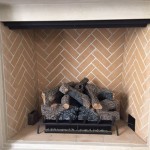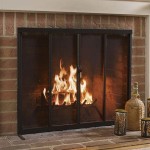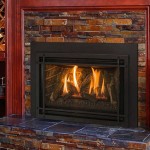The Enduring Appeal of Stone Fireplace Mantels
A stone fireplace mantel serves as more than just a decorative feature; it is a focal point that anchors a room and imparts a sense of permanence and character. The choice of stone, its texture, and the mantel’s design profoundly impact the overall aesthetic of a living space. Beyond aesthetics, stone mantels offer practical benefits, including heat resistance and durability. This article explores the various facets of stone fireplace mantels, covering their advantages, design considerations, and selection process.
Enhancing Architectural Style with Stone
Stone mantels are available in a wide array of styles, allowing them to complement diverse architectural designs. From the rustic charm of a fieldstone mantel in a country-style home to the sleek sophistication of a honed granite mantel in a modern residence, the possibilities are expansive. The selection of the appropriate stone is critical in achieving architectural harmony. For example, a limestone mantel often suits traditional or transitional spaces, offering a classic and elegant look. Conversely, a slate mantel can bring a contemporary edge with its darker tones and naturally cleft surfaces.
The size and proportions of the mantel should also be carefully considered relative to the fireplace opening and the room's dimensions. An oversized mantel in a small room can feel overwhelming, while a too-small mantel might be lost in a larger space. The goal is to create a balanced and visually appealing focal point that enhances the architectural character of the room without dominating it.
Furthermore, the style of the mantel can be tailored to reflect personal preferences within the overarching architectural theme. A simple, clean-lined mantel works well in minimalist settings, while a more ornate and detailed mantel can add a touch of grandeur to a formal living room.
The Durability and Practicality of Stone Mantels
Stone is inherently a durable and heat-resistant material, making it an ideal choice for fireplace mantels. Unlike wood mantels, stone mantels are not susceptible to warping, cracking, or combusting from the heat of the fireplace. This durability ensures that a stone mantel can withstand years of use with minimal maintenance. Certain types of stone, such as granite and marble, are particularly resistant to scratches and stains, further enhancing their longevity.
The maintenance requirements for stone mantels are relatively straightforward. Regular dusting and occasional cleaning with a mild detergent are typically sufficient to keep the mantel looking its best. Sealing the stone, particularly porous varieties like limestone and sandstone, can provide added protection against stains and water damage. The frequency of sealing depends on the type of stone and the level of use.
In addition to their durability, stone mantels also offer practical advantages in terms of heat management. The thermal mass of stone allows it to absorb and slowly release heat, contributing to a more consistent temperature within the room. This can be particularly beneficial in homes with efficient fireplaces or wood-burning stoves.
Materials Considerations for Stone Fireplace Mantels
The selection of stone for a fireplace mantel involves considering factors such as color, texture, veining, and porosity. Common choices include marble, granite, limestone, slate, and sandstone, each with its unique characteristics.
Marble is prized for its elegant veining and polished surface, adding a touch of luxury to any space. Granite is an extremely durable and versatile option, available in a wide range of colors and patterns. Limestone offers a more subtle and natural look, with a warm, creamy tone. Slate provides a contemporary and textured aesthetic, often featuring natural clefts and variations in color. Sandstone offers a rustic and earthy feel, with a characteristic granular texture.
The color of the stone should be chosen to complement the existing décor of the room, including the wall color, flooring, and furniture. Neutral tones, such as beige, gray, and white, tend to be versatile and can work well with a variety of color schemes. Darker stones, such as black granite or dark slate, can add drama and contrast. Veining patterns can also influence the overall look, with bold and dramatic veining creating a more striking visual impact.
The porosity of the stone affects its susceptibility to staining and water damage. Porous stones, such as limestone and sandstone, require sealing to protect them from spills and moisture. Non-porous stones, such as granite and marble, are more resistant to stains but may still benefit from sealing for added protection.
Ultimately, the choice of stone for a fireplace mantel is a personal decision that should be based on aesthetic preferences, practical considerations, and budget constraints. Consulting with a stone supplier or interior designer can provide valuable guidance in selecting the most appropriate material for a specific project.

Barnwood Fireplace Mantel The Collection

Conrad Cast Stone Fireplace Mantel Old World Stoneworks

Amhurst Cast Stone Fireplace Mantels Old World Stoneworks

Essex Stone Fireplace Mantel

Newport Cast Stone Fireplace Surround Oregon Castings And Design

The Diez Classic Stone Fireplace Mantel

Chiseled Stone Series 5 Mantel Grey Capo Fireside

Contemporary Cast Stone Fireplace Mantel

Verona Cast Stone Fireplace Surround Surrounds

Magrahearth Natural Wood Concrete Mantel Fireplace Stone Patio
Related Posts








